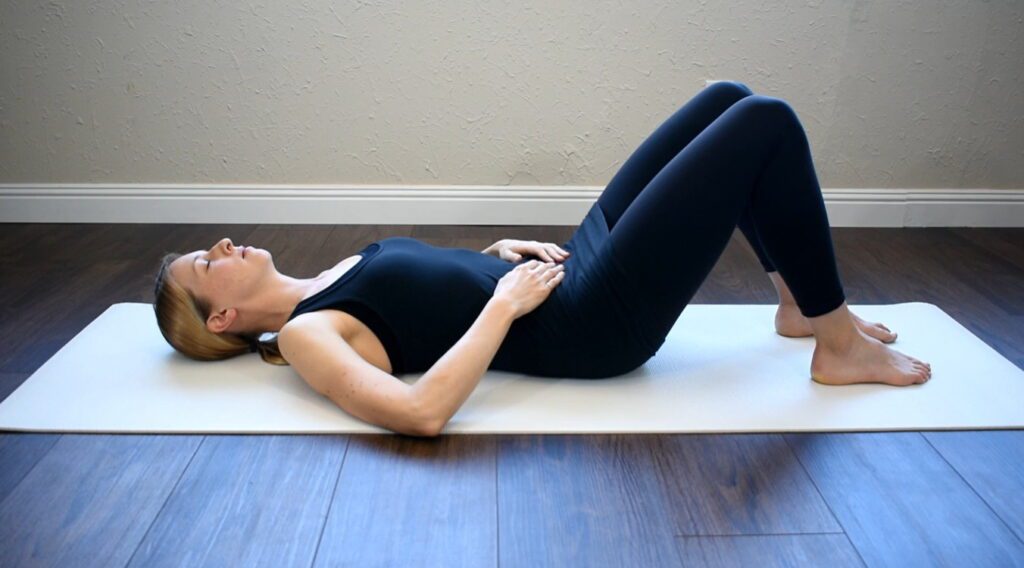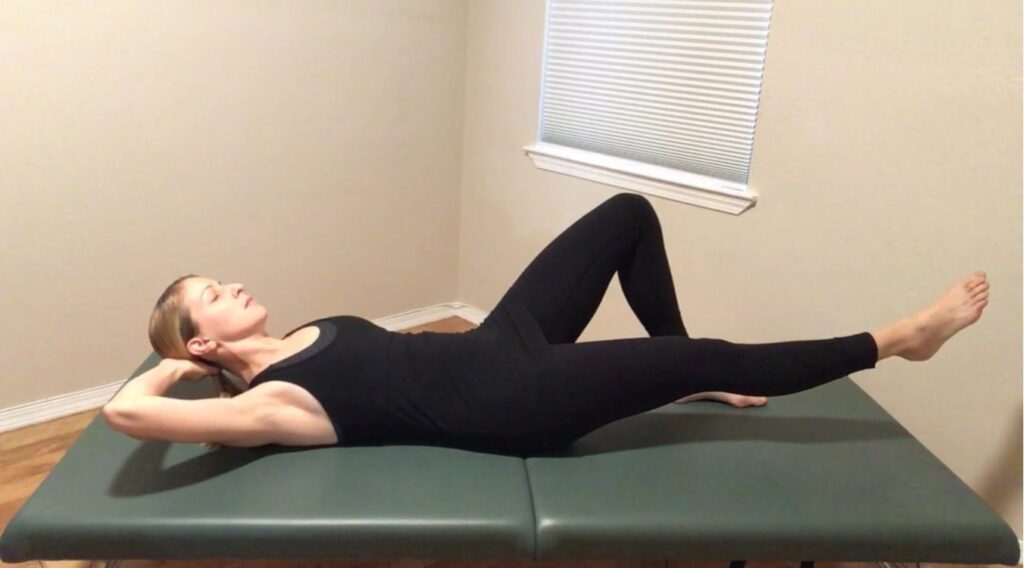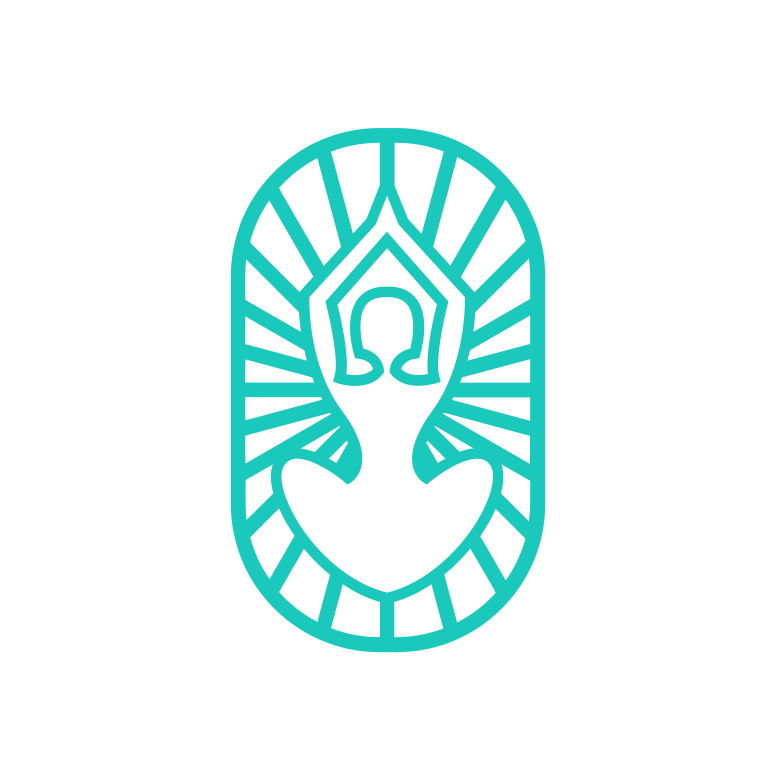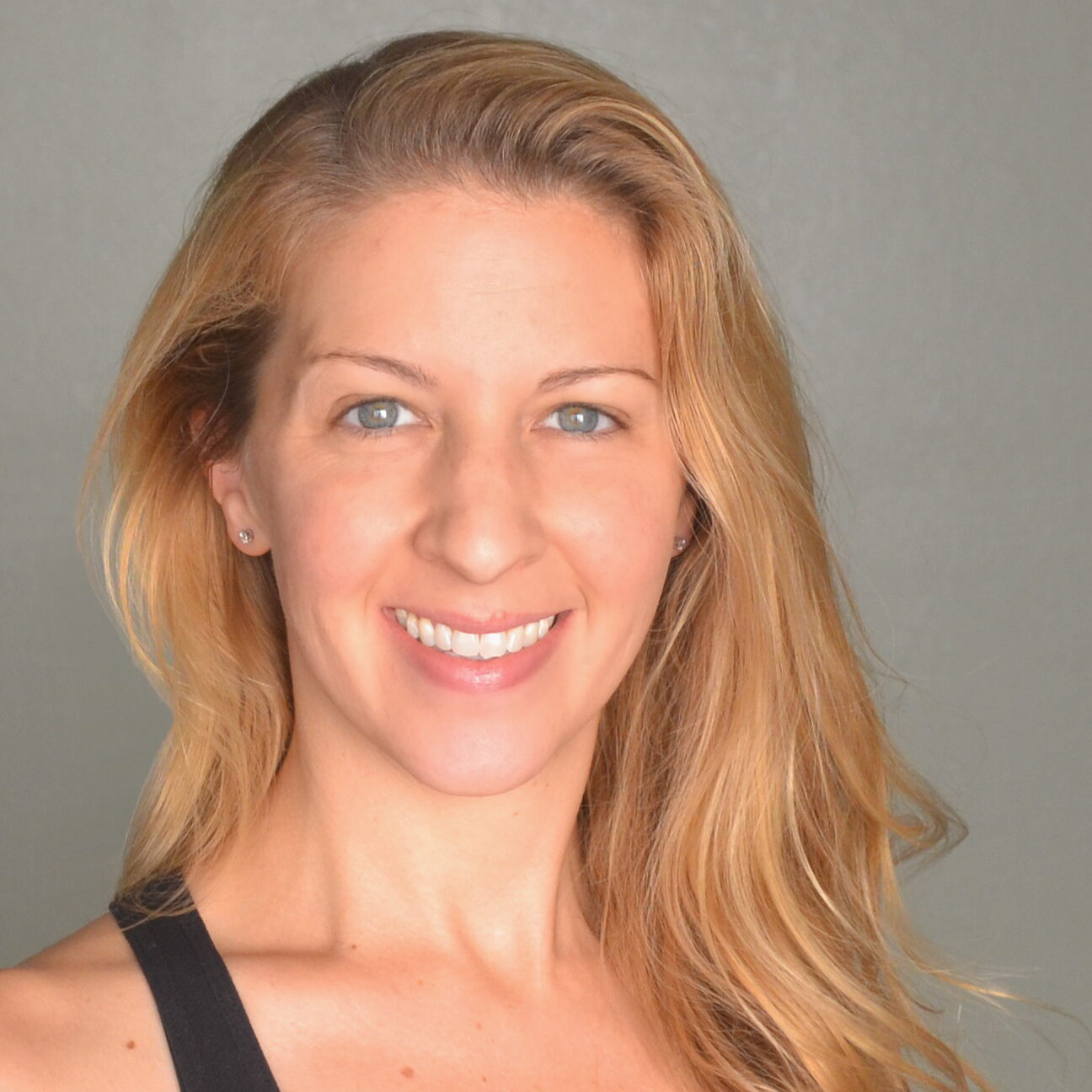Anxiety is thought of as a psychological disorder, but it actually involves many systems of the body. Anxiety is a true “somatic” condition: It is typically brought on and made worse not by any external source like a virus, but by our internal psychological and physiological functioning.
For many people, chronic muscle tension plays a large role in anxiety. It may not surprise you that psychological stress causes muscle tension, but it goes the other way as well: muscle tension causes psychological stress.
Habitual posture, resulting from chronic muscular contraction, also plays a role in anxiety. Stress triggers a primitive postural reflex, causing us to adopt a certain type of posture in order to physically protect ourselves. Staying in this posture all the time raises levels of the stress hormone cortisol, increasing our anxiety.
This is actually good news—it means that by reducing your muscle tension and retraining your posture, you can ease your anxiety. For many people, retraining their neuromuscular system is a critical part in recovery from anxiety and related conditions.
In this article, I’ll discuss:
• What happens during our primitive stress response
• How anxiety increases muscle tension, and vice versa
• The relationship between anxiety and posture
• How anxiety affects our breathing
• How to relieve anxiety by releasing muscle tension with Clinical Somatics exercises
What Happens During our Primitive Stress Response
Until relatively recently in human evolution, we lived a nomadic, hunter-gatherer lifestyle, moving with the seasons and following our sources of food. Daily life was focused on physical survival: finding food, preventing and healing from injuries, and defending against attack. We evolved to expertly deal with these acute stressors, automatically speeding up certain body systems to help fight the stressor, and automatically returning to normal functioning when the source of stress was gone.
When we perceive a threat to our survival, our sympathetic nervous system responds with the “fight-or-flight” response. This stress response speeds up our blood flow, breathing, and production of energy for muscles. Our muscles tense as they ready for action, and postural reflexes prepare us to either stand up and defend ourselves or curl up into a ball. Functions of our body that are not essential for fighting or fleeing, like digestion, immune response, and sexual arousal are inhibited to allow our body to devote itself fully to surviving the stressful event.
Then just as quickly, as soon as we believe that the source of stress is gone, our parasympathetic nervous system automatically cues the functions of our body to return to normal. Heart rate and breathing slow down, muscles relax, and the digestive, immune, and reproductive systems resume their work.
Unfortunately, modern-day psychological stressors—like emotional, social, and financial problems—trigger our stress response in the same way that physical stressors do. It all comes down to perception; if we perceive something to be a threat, our stress response is activated. But unlike acute physical stress, from which we are quite adept at recovering, psychological stress stays in our minds and constantly activates our stress response.
Our blood pressure remains elevated and we habitually take shallow breaths. Our muscles stay tight all the time, ready for action. These chronically contracted muscles use a great deal of energy, causing us to feel fatigued. Stress hormones keep the immune system suppressed and blood sugar levels high. In the end, our response to psychological stress usually causes more damage than the source of stress could have caused in the first place.
Repeated activation of the stress response can lead to generalized anxiety disorder, a mood disorder characterized by excessive worry, nervous behavior, irritability, restlessness, fatigue, difficulty concentrating, muscle tension, and insomnia. People who suffer from chronic anxiety are in a state of heightened stress that never goes away.
Unfortunately, it’s surprisingly easy to get used to an increased level of muscle tension and heart rate and to be completely unaware that your baseline level of stress is elevated.
Both anxiety and chronic muscle tension are conditions of the nervous system in which our reactions have become habituated to the level that they are not under our conscious, voluntary control—that’s why they feel so uncontrollable and unchangeable. Conscious intervention, involving retraining of the nervous system, is necessary to truly eliminate both anxiety and muscle tension.

How Anxiety Increases Muscle Tension, and Vice Versa
Anxiety causes our natural stress response to be constantly activated, and our muscles contract as part of our stress response. When we experience anxiety, our neuromuscular system never gets a chance to recover or return to normal. Our heart rate remains elevated and our muscles retain a higher than normal level of tension.
Here’s what’s happening in your muscles when they’re tense all the time:
When muscles are constantly contracted, cells are forced to create energy for the muscles through the process of anaerobic metabolism. In this process, glucose is synthesized into adenosine triphosphate (ATP) without the help of oxygen, and lactic acid is produced as waste.
Lactic acid is often blamed for muscle soreness, but actually, our body quickly breaks down lactic acid into lactate and hydrogen ions. A buildup of hydrogen ions, which activate our pain receptors, is likely the cause of the dull ache and burning sensation we feel in our muscles during strenuous exercise.
And a build up of lactate is linked to anxiety. Studies show that people with anxiety have higher resting levels of muscle tension,[*] react to stress with stronger muscle contractions, and return to their baseline level of tension more slowly than control subjects. As a result of their increased muscle tension, levels of lactate in the blood are higher in anxiety patients.
But what is quite interesting is that this physiological loop goes both ways. We can actually make ourselves anxious, and even induce panic attacks, by injecting lactate into our bloodstream.[*][*] So not only does anxiety increase muscle tension, but chronic muscular contraction and increased lactate levels can cause anxiety, creating a vicious cycle.
Mental activity alone, not just psychological stress, is enough to increase muscle tension. Edmund Jacobson, a physician and psychologist, conducted a number of studies in the 1920s and 1930s using an electromyograph (EMG) to observe the correlation between thought and muscle tension.[*] He developed a technique called “progressive relaxation” to guide his subjects through a process of contracting and releasing their muscles one by one. As the subjects’ muscular tension decreased, their mental activity decreased as well. Once relaxed, it was quite
easy to see the elevations in muscle tension that occurred when the subjects were instructed to think about specific things.
Jacobson’s research, as well as the research that followed by scientists including Robert Malmo, Peter Sainsbury, and J.G. Gibson[*] proved that mental activity always occurred along with an increase in muscular tension, and that reducing muscle tension had the immediate effect of decreasing mental activity and the overall activity of the central nervous system.
The Relationship Between Anxiety and Posture
Our primitive stress response involves more than just tensed muscles and an elevated heart rate. The “fight” response triggers a postural reflex that I refer to as the action response. When we prepare to fight, we instinctively arch our back and stick out our chest to let the enemy know we’re confident and ready to take them on.
Our “flight” response triggers the opposite postural reflex, which I refer to as the withdrawal response. When we want to avoid a fight and simply protect ourselves, we instinctively try to curl up into a ball to protect the most vulnerable parts of our body from attack. We contract our abdominal and chest muscles, flex our hips and knees, raise our shoulders, and bring our head forward. We clench our jaws, squint our eyes, and tighten our facial muscles. This postural response can be observed in creatures throughout the animal kingdom, even insects.
Anxiety tends to activate the withdrawal response, bringing us into rounded posture. While chronic anxiety triggers the withdrawal response on a much less noticeable level than a physical attack, the constant triggering of this response leads to a gradual worsening of this posture over time. There are several reasons why this posture is problematic.
The first reason is muscle tension. The withdrawal response posture is created by tight abdominal and chest muscles which pull the spine into a rounded position. As we learned in the last section, chronically tight muscles increase anxiety by raising levels of lactate in the blood. In addition, muscle tension increases mental activity and overall activity of the nervous system, making it very difficult to relax.
The second reason is the musculoskeletal pain and functional issues that can result from the withdrawal response posture. Rounded posture strains the back muscles and tightens the neck muscles, causing back and neck pain as well as disc degeneration and nerve compression. Headaches, teeth grinding, and temporomandibular joint disorders can develop due to contraction of the neck and jaw muscles. Compression of the front of the body puts pressure on
all the internal organs, contributing to shallow breathing, high blood pressure, digestive problems, frequent urination, and constipation. All of these conditions increase our stress level due to the pain involved or the way our physiological function is affected.
Lastly, research has shown how simply being in the withdrawal response posture—independent of experiencing any stress—increases our levels of cortisol, a stress hormone. Amy Cuddy of Harvard University and Dana Carney and Andy Yap of Columbia University tested the effects of what they call “power posing.”[*] In their study, test subjects had to spend two minutes sitting in high-power poses or low-power poses. High-power poses were expansive and open, meaning that the subject expanded their body to take up more space and brought their limbs away from
the center of their body. Subjects in low-power poses took up less space and brought their limbs in closer to the center of their body. These postures should sound familiar: the action response triggers high-power poses, and the withdrawal response brings us into low-power poses.
The study measured levels of cortisol and testosterone before and after power posing. Levels of the stress hormone cortisol is typically higher in people who people who feel powerless, and lower in those who feel powerful. The steroid hormone testosterone is linked to assertiveness, and people with high levels of testosterone typically feel powerful and act confidently.
The effects of spending just two minutes in either high-power or low-power poses yielded significant results. The high-power posers experienced a spike in testosterone levels and a drop in cortisol levels, while the low-power posers experienced a drop in testosterone and a rise in cortisol. These hormonal changes were accompanied by emotional shifts: the high-power posers reported feeling more powerful and were more likely to take a gambling risk after striking their poses than the low-power posers.
Incredibly, spending just two minutes in a posture has immediate effects on the way we feel, our behavior, and even our hormone levels. Imagine the effects of spending a lifetime in a certain posture. Spending years in the withdrawal response posture keeps cortisol levels high, increasing stress and contributing to the feeling of being powerless.
Luckily, we can release our muscle tension and change our posture using the Clinical Somatics techniques of pandiculation and proprioceptive retraining. And by changing our posture, we can actually change the way we feel inside.

How Anxiety Affects our Breathing
If you are at rest and you have nothing limiting your ability to take a full breath—stress, muscle tension, or posture—then you’ll likely notice that your breathing is in the state of eupnea. This is also called quiet breathing, and it requires no conscious effort.
Eupnea is the healthy, unaffected breathing of all mammals. In the state of eupnea, the abdominal muscles are relaxed, allowing the abdomen to gently expand forward during inhalation. The chest also expands during inhalation, and the collarbone and shoulders will subtly rise. During exhalation, the belly, chest, collarbone, and shoulders all return to their neutral resting position.
When we perceive a threat to our well-being and our primitive stress response is activated, the autonomic nervous system automatically speeds up our rate of breathing. This allows us to take in more oxygen, making us better able to defend ourselves and survive attack. This type of breathing, known as shallow, chest, or thoracic breathing, consists of drawing air into the lungs without allowing the abdomen to expand forward. Shallow breathing, as the term implies, does not allow us to take full breaths.
Evolution designed shallow breathing to be a short-term solution, not a chronic state. But if we experience stress on a regular basis, shallow breathing can easily become habitual. That means that our nervous system has adopted this way of breathing as a constant activity, and we are likely unaware of it. If shallow breathing becomes habitual, then we’re breathing that way all the time, whether or not we’re experiencing stress.
When we habitually take shallow breaths, our oxygen supply is limited. This can contribute to serious medical conditions including anxiety disorders, panic attacks, hyperventilation, shock, asthma, pneumonia, pulmonary edema, and a buildup of carbon dioxide in the body known as hypercapnia.
So, once shallow breathing has become habitual, the breathing pattern itself can induce stress.
Try it: Breathe only up into your chest, not letting your belly expand, and notice how you feel. Do you feel stressed out, simply by breathing this way?
It’s important to become aware of how you’re breathing, and take the time to train yourself to breathe more deeply if needed. Here are the steps you can take:
- Notice if your abdominal muscles are relaxed and your belly gently expands forward as you inhale. If it does, great! If not, you’re breathing shallowly, up into your chest. You can use the Clinical Somatics exercises included in the next section, along with the diaphragmatic breathing exercise included with the first exercise, to release your abdominal muscles and learn how to breathe diaphragmatically. It just takes practice, like any muscular skill. The more often you practice diaphragmatic breathing, the more habitual it will become—and the more relaxed you’ll feel.
- Notice how your posture could be affecting your breathing. This is most likely to occur if you tend to round your upper back and shoulders forward. This posture compresses the front of the body and makes it difficult to take a full breath. The second exercise included below, the Arch & Curl, is very effective for releasing the tight muscles involved in this rounded posture. As you release your abdominal and chest muscles, notice how much easier it becomes to take a full, deep breath.
- Take note of how many breaths you take per minute. You can count manually, but the most accurate way to track your breathing throughout the day is with a smart watch or fitness tracker that tracks respiration rate. A healthy respiration rate for adults is between 12-20 breaths per minute. A rate higher than 20 can indicate anxiety or other medical condition.
Free Somatic Exercises to do at Home
The following three somatic exercises for anxiety use the movement technique of pandiculation to release chronic
muscle tension, relax the nervous system, and retrain the rounded posture triggered by the withdrawal response.
Arch and flatten

Watch the video demonstration linked here to get a basic understanding of the movement.
After the Standing Awareness exercise, you’ll come down to the floor and lie down on your carpet, exercise mat, or blanket. Before starting the Arch & Flatten movement, I guide you through a few minutes of diaphragmatic breathing. This exploration teaches you how to relax your abdominal muscles and allow your lower belly to expand as you inhale, allowing you to take a full breath.
If this is challenging for you, practicing these three exercise videos regularly will allow you to release the tight muscles in the front of your body that are preventing you from breathing deeply.
The Arch & Flatten is the most important Clinical Somatics exercise to do daily. It pandiculates the muscles of the lower back and abdomen, which are central to the postural reflexes triggered by stress. This exercise allows you to release tension and regain voluntary control of the muscles of the lower back and abdomen, stabilizing the core of your body and bringing your pelvis into correct alignment.
Arch & Curl

Watch the video demonstration linked here.
The Arch & Curl is a bigger version of the Arch & Flatten. By lifting the head and shoulders off the floor in this movement, you engage the abdominal muscles more strongly, allowing for a greater release of tension. This exercise is important for anyone who has a rounded upper back, shoulders that round forward or rotate inward, or forward head posture.
There is a second exercise included in this video, called Head Lifts, which starts at 5:40 in the video. This exercise releases the muscles involved in forward head posture, and you can feel free to practice this movement as well.
Iliopsoas Release

Watch the video demonstration linked here.
This is an important exercise for everyone to do regularly, as nearly everyone holds tension in their psoas major muscle. Due to its location deep in the core of the body, the psoas is at the root of most postural issues. The psoas also tightens up in response to stress or trauma. As you release chronic tension in your psoas, you may notice emotions coming to the surface.
It’s important to practice this exercise gently and correctly. You’ll see that there are three versions of this movement, each one increasing in intensity. Please only do the versions that feel comfortable for your body, and don’t force anything. As I instruct in the video, it is very important to press your lower back firmly into the floor the entire time as you lift and lower your leg; do not release the flattening of your lower back until you have lowered your leg all the way to the floor.
This iliopsoas video begins with the Arch & Flatten, which should be practiced as a warm-up before doing the Iliopsoas Release. Once you’re comfortable with all three exercises, you can practice them in sequence: Arch & Flatten, Arch & Curl, and then the Iliopsoas Release.
However, be careful to not overdo it. You may find that doing just one or two of these exercises per day is right for you in the beginning, especially if you have any type of chronic pain.
If you want to learn more about Clinical Somatics, I recommend reading The Pain Relief Secret, and visiting https://somaticmovementcenter.com.

